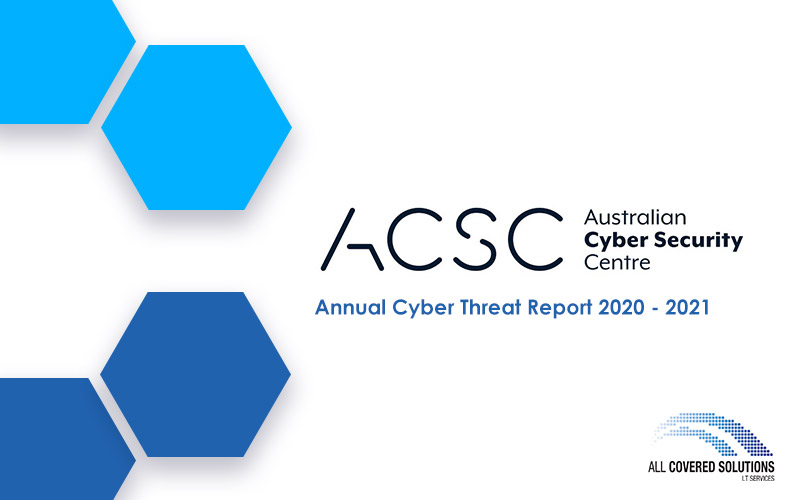It’s no secret cyber crime is on the rise in Australia. The Australian Cyber Security Centre (ACSC) has released their Annual Cyber Threat Report 2020-21 in which they reveal the past financial year has seen a 13% increase in cybercrime reports as a whole, and a 15% increase in ransomware reports specifically. Undeniable growth in malicious cyber activity has placed urgency on Australian businesses to adopt strong cybersecurity plans and invest in adequate protection.
The ACSC quotes, “While the number of ransomware-related cybercrime reports is a relatively small proportion of the total number of cybercrime reports, ransomware remains the most serious cybercrime threat due to its high financial impact and disruptive impacts to victims and the wider community”.
It also comes as no surprise that many of these cybercrime reports are COVID-19 related. Cybercriminals have certainly taken advantage of the pandemic situation, playing on the low-security work from home environments and the stress and fear felt by many Australia workers. The ACSC acknowledge over 1,500 cybercrime reports of malicious cyber activity related to the coronavirus pandemic were received per month – approximately 4 per day – and that is only what was declared to ACSC as many incidents go unreported.
Unfortunately, of these pandemic related cybercrime reports, more than 75% involved Australians losing money or personal information. Once gone, these can be very difficult to attempt to recover and personal information may be permanently exposed.
In a more general look, the severity and impact of reported cyber security incidents has increased over the year with almost half of these incidents categorised as ‘substantial’. The majority of reported cybercrimes were incidents of fraud, online shopping scams, and online banking scams – acts that rely on fear and uncertainty in the victim which has surely spiked with the unprecedented pandemic we are enduring. The self-reported losses from cybercrime have been revealed to be totalled at more than $33 billion.
Let’s look a little more local. Australia’s east coast is definitely hit the hardest copping 80% of reported incidents for the last financial year. Queensland just takes the lead for highest number of reports coming in at 30% which is very closely followed by Victoria at 29%.
So what does this all mean? The bottom line is incidents of cybercrime are increasing significantly in Australia, with Queensland being one of the top targets. Ransomware – the most serious threat in the eyes of the ACSC – is also increasing rapidly in reports and poses threat to Australian businesses. The average number of calls to the ACSC has seen an increase of more than 310% compared to the previous financial year. The time to invest in cyber security is right now.
The best defence you can have is comprehensive cybersecurity software on all of your systems. This includes all equipment used in a work from home setting to access your servers and networks, as well as the equipment in your offices. You can get endpoint protection to guard your business against ransomware, malware, and other exploits, and avoid a messy and expensive cyber attack situation.
As brilliant as this software is at protecting your digital environment from malicious attacks, there is one thing it cannot do: This software cannot stop your employees from giving sensitive information in a phishing scam. This type of incident involves tricking the victim into handing over sensitive information such as passwords, financial details, and other personal data. These attacks are often disguised as a log in screen designed to trick the victim into thinking it is their usual log in site for them to input their credentials. It may be dressed up to look like your normal Microsoft log in, or perhaps a staff portal. To avoid this, security awareness training is crucial.
Want to talk in more detail? We can secure your systems with the best protection available and train your staff to be cyber security aware. Contact us here – we are always happy to chat!




